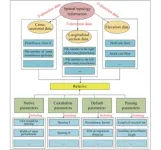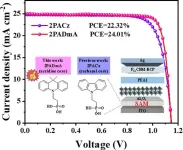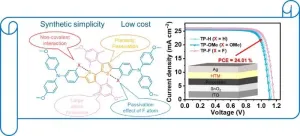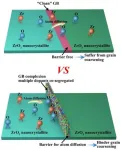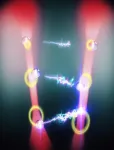(Press-News.org)
Designing the spatial arrangement of underground powerhouses involves numerous complex parameters and boundaries, requiring frequent reference to various cases and specifications. Traditional methods struggle to efficiently retrieve this information, leading to suboptimal designs and extended project timelines. Due to these challenges, there is a pressing need for a more intelligent and efficient approach to streamline the design process, enhance accuracy, and improve project management in hydropower engineering.
Researchers from Tianjin University, in collaboration with PowerChina Kunming Engineering Corporation Limited and other institutions, have developed a novel methodology for constructing a knowledge graph for the spatial arrangement of underground powerhouses. Published in the Journal of Intelligent Construction on June 18 2024, the study (DOI: 10.26599/JIC.2024.9180026) demonstrates how this knowledge graph can enhance digital intelligent design and operation of hydropower facilities.
The study details a comprehensive process for constructing a knowledge graph to optimize the spatial arrangement of underground powerhouses. It begins with designing an ontology skeleton to represent the knowledge organization structure. Data is collected and processed using optical character recognition (OCR) technology and the THU Lexical Analyzer for Chinese (THULAC) to handle large volumes of unstructured information. The extracted knowledge is stored in the Neo4j database, forming the basis of the knowledge graph. This graph is then used for intelligent querying and parameter recommendation, significantly enhancing design and operational efficiency. By enabling efficient retrieval and application of design knowledge, the knowledge graph addresses existing challenges in spatial arrangement, paving the way for improved accuracy and efficiency in hydropower engineering projects.
Dr. He Jia, a lead researcher from Tianjin University, stated, "The implementation of a knowledge graph in the design of underground powerhouses marks a significant step forward in the field of hydropower engineering. This approach not only improves the efficiency of design processes but also provides a robust foundation for future advancements in intelligent construction and operation."
The application of this knowledge graph methodology extends beyond underground powerhouses, offering potential benefits for various fields of engineering that require complex spatial arrangements. By enabling more efficient retrieval and application of design knowledge, this approach can lead to significant cost savings, improved safety, and enhanced project management in large-scale construction projects. The continuous update capability of the knowledge graph ensures its long-term relevance and adaptability to evolving industry needs.
This work is supported by Innovation Fund Projects from Tianjin University (No. 2023XJD-0065).
About Journal of Intelligent Construction
Journal of Intelligent Construction (JIC), sponsored by Tsinghua University and the China National Committee on Large Dams, published by Tsinghua University Press (TUP) and exclusively available via SciOpen, is a peer-reviewed journal for publishing original research papers, case studies, reviews and comments regarding the use of novel technologies in all domains of civil engineering, e.g., hydraulic engineering, structural engineering, geotechnical engineering, transportation, and construction management. The journal focuses on the application of advanced theories, methodologies, and tools, such as machine learning, sensors, robotics, 5G, the Internet of Things, artificial intelligence, building information modelling, and computational methods, etc., in all stages of the construction life cycle, which makes the process more intelligent and efficient. The journal also covers other essential areas of civil engineering, e.g., planning and design, operation and maintenance, and disaster mitigation.
About SciOpen
SciOpen is an open access resource of scientific and technical content published by Tsinghua University Press and its publishing partners. SciOpen provides end-to-end services across manuscript submission, peer review, content hosting, analytics, identity management, and expert advice to ensure each journal’s development. By digitalizing the publishing process, SciOpen widens the reach, deepens the impact, and accelerates the exchange of ideas.
END
Perovskite solar cells (PSCs) are highly regarded for their exceptional performance and straightforward fabrication. However, traditional hole transport layers (HTLs) like Poly (triarylamine) (PTAA), Nickel Oxide (NiOx), and poly (3,4-ethylenedioxythiophene)-poly (styrenesulfonate) (PEDOT) have inherent limitations that impede efficiency and stability. These materials often suffer from issues such as hydrophobicity, high reactivity, and acidity, which negatively affect the overall performance of PSCs. Due to these challenges, there is a pressing ...
To achieve carbon neutrality, advancements in energy conversion and storage technologies are essential. Current aqueous energy devices suffer from performance limitations due to the trade-off between permeability and selectivity in permselective membranes. This trade-off hampers the efficiency of energy conversion and storage systems, necessitating the development of membranes that can balance these properties effectively. Due to these challenges, further research is required to explore innovative membrane structures that can enhance the performance of energy conversion and storage devices.
A research team from Tsinghua University has published a study (DOI: 10.26599/EMD.2024.9370041) ...
Perovskite solar cells (PSCs) are celebrated for their exceptional photovoltaic performance and affordability. However, the high cost of charge transport materials remains a major obstacle to their commercialization. Conventional materials like 2,2',7,7'-Tetrakis[N,N-di(4-methoxyphenyl)amino]-9,9'-spirobifluorene (Spiro-OMeTAD), are expensive and complex to produce. Therefore, developing low-cost, efficient alternatives is essential to make PSCs more economically viable. Addressing these issues is crucial for advancing solar technology and achieving broader adoption. Hence, this study focuses ...
To date, ceramic scientists have devised various strategies to impede grain coarsening. The utilization of nano-sized precursor powder can not only facilitate the densification process, but also yields bulk ceramics with reduced grain sizes compared with micron-sized precursor powder. Rapid sintering by passes the low-temperature surface diffusion stage and directly enters the high-temperature sintering stage through rapid heating, rendering it an effective way to inhibit grain coarsening. However, these aforementioned strategies fail to prevent coarsening during the application of nano-ceramics in medium- ...
The development of innovative medicines is an expensive, time-consuming and risky business. On average, it usually takes at least a decade and billions of dollars to bring a new drug from project initiation to approval. Identifying effective targets and conducting biological analysis is the first step in the process and remains a top priority in drug development.
To facilitate for maximum data privacy and data security, Insilico Medicine ("Insilico"), developed a hardware platform, PandaOmics Box, that does not require Internet access and allows for on-premise biological analytics, target identification, biomarker ...
OAK BROOK, Ill. – The radiology gender gap is decreasing, but there remains work to be done, according to an editorial published today in RadioGraphics, a journal of the Radiological Society of North America (RSNA).
In 2022, nearly half of residents and fellows in Accreditation Council for Graduate Medical Education
(ACGME)–accredited programs were female. However, less than 27% of active diagnostic radiologists and only 10% of active interventional radiologists are female. Within the 48 largest medical specialty groups, diagnostic radiology ranks 41st and ...
NEW YORK, NY– The American Federation for Aging Research (AFAR) is pleased to announce a $450,000 grant from The Hearst Foundations in support of the Grants for Junior Faculty program.
The Grants for Junior Faculty provide early career investigators with up to $150,000 for one to two years to support research focused on aging processes and age-related diseases. The $450,000 grant from Hearst Foundations will fully underwrite three Grants for Junior Faculty over the next three years.
Selected ...
Using two optically trapped glass nanoparticles, researchers observed a novel collective Non-Hermitian and nonlinear dynamic driven by nonreciprocal interactions. This contribution expands traditional optical levitation with tweezer arrays by incorporating the so called non-conservative interactions. Their findings, supported by an analytical model developed by collaborators from Ulm University and the University of Duisburg-Essen, were recently published in Nature Physics.
Fundamental forces like gravity and electromagnetism are reciprocal, meaning two ...
New, non-native plant species are constantly being discovered in Svalbard, and researchers are working to ascertain what threat these species pose to the native plants.
So far, the Arctic has managed to avoid one of the most serious threats to biodiversity on Earth. This is also true for Svalbard, but things could change very quickly, and researchers want to find out how to counteract this threat.
“Increased human activity heightens the risk of new plant species being introduced. And climate change increases the risk of invasive species establishing themselves,” says Kristine Bakke Westergaard.
She is an associate ...
Available to anyone, anywhere, at anytime, Texl.org allows individuals and organizations to create scientifically valid surveys in less than five minutes. In drag-and-drop fashion, survey creators can choose from an ever-growing list of 50 validated scales, measuring aspects ranging from team conflict to personal initiative and transformational leadership.
“The point of science is to develop knowledge that ultimately is to the benefit of society. Unfortunately, we are not always great in translating our knowledge so that it is usable for practitioners out there. With Texl we’re changing that,” explains Professor Niels Van Quaquebeke, ...
